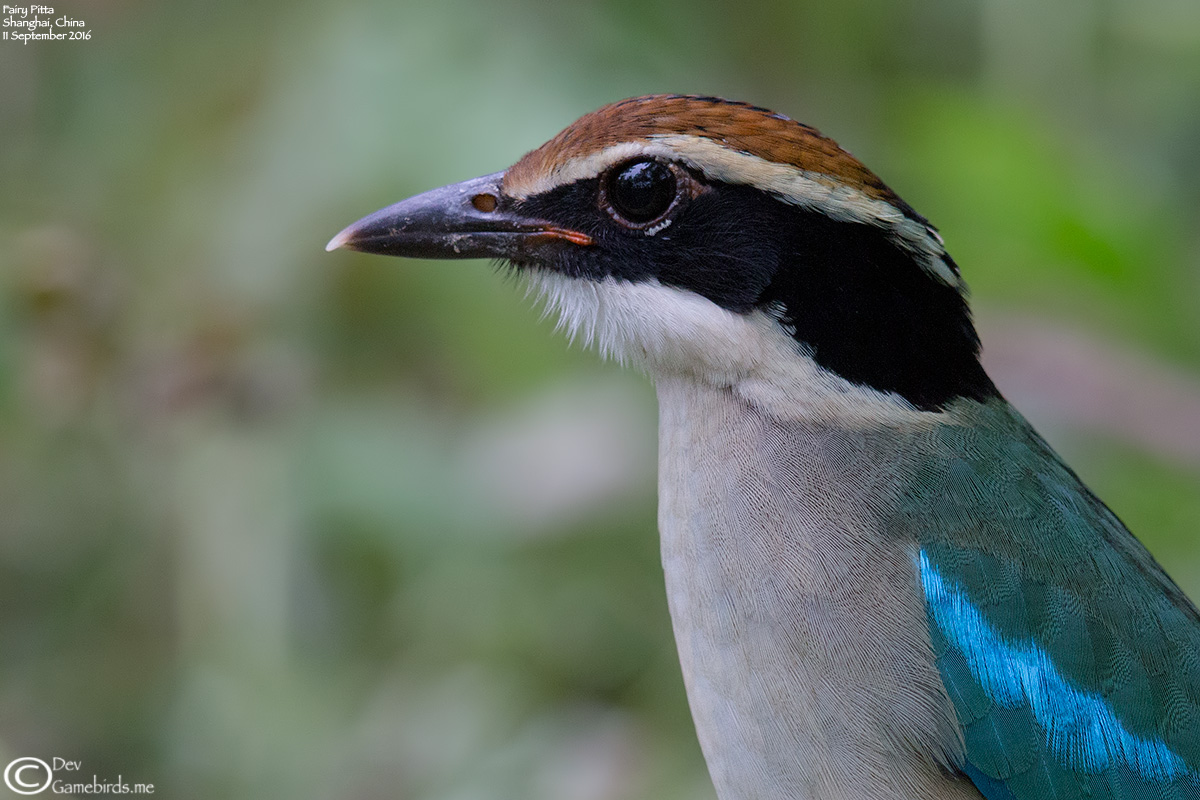
It’s been a while since the last post but that doesn’t mean migration was shut off, we had several engaging weekends during Mid September and couple slow weekends during early October but nothing “spectacular” turned up. It was until October 9, heavy Easterly winds which was blowing brains out at 35km/h, we stumbled on to a dull/drab/discolored Warbler and it wasn’t like any of the regular ones. Quick consultation with the expert circle gave the mega bird of this year, a “Willow Warbler”
The discussion on the ID is in the birdforum thread. Russell Boyman reached out to Paul Holt for his opinion and he generously provided with several notes on the ID and also very detailed information on the previous records of Willow Warbler in China.
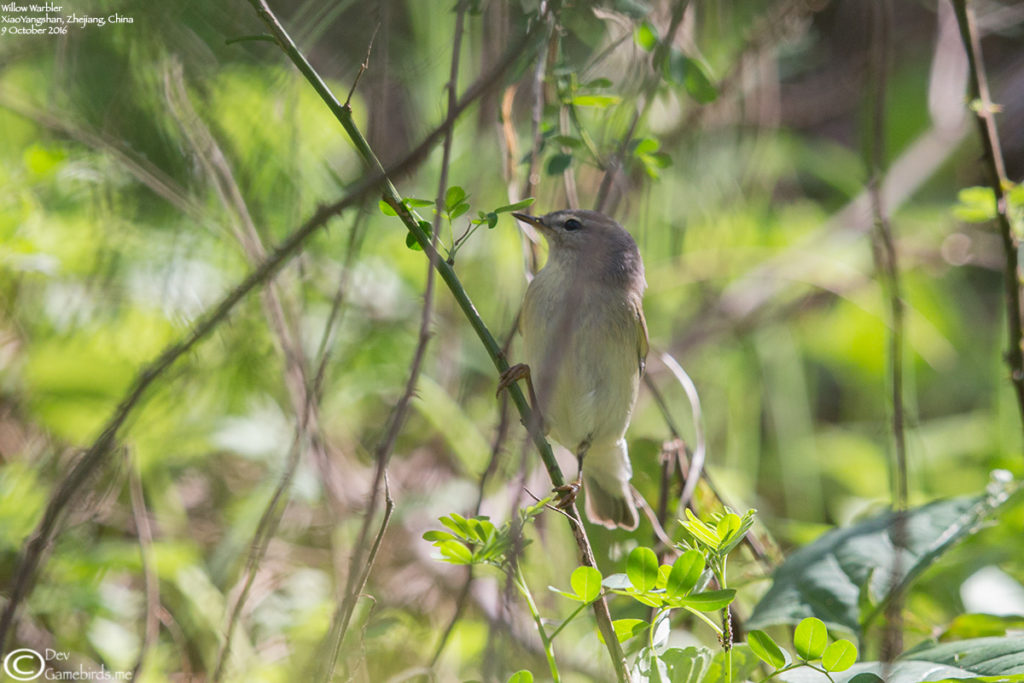
Willow Warbler in Shanghai
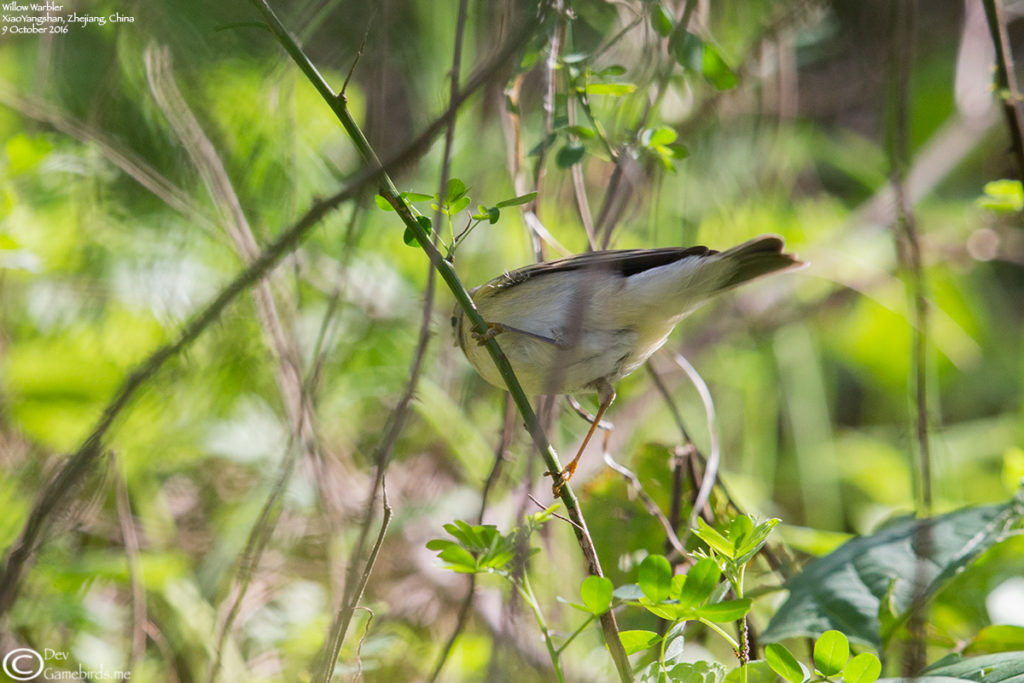
Long primary projection
Here is what Paul Holt wrote in the e-mail
“The bills’s quite extensively pale at the base of the lower mandible & along the cutting edge of both mandibles; the legs & feet are genuinely pale (if surprisingly thing or spindly for a Willow Warbler); the wings, best viewed in image 6(2nd image above) where its facing away, really do look long & while the exact length of the primary projection can’t be seen, the wing tips cross & the primary projection’s clearly not short; I also liked the faint lemon yellowish wash on the vent & breast sides.
An excellent record & a quality rarity anywhere in China. I’m aware of just six previous Chinese records (though there might be one or two more). They are are –
- 1 at Ge’ermu (Golmud), Qinghai during 18-27 October 1992 (Jesper Hornskov in litt.). The bird was not photographed and the record remains unpublished.
- 1 at the Jingtanggang salt works, Leting, Hebei on the 4 Oct 2006 (Jesper Hornskov pers. comm.)
- 1 at Long Valley, Hong Kong on 23 Oct 2008. That bird was seen only by the photographer and subsequently identified from his photo on the Hong Kong Bird Watching Society web-site. (see http://www.hkbws.org.hk/BBS/viewthread.php?tid=6356&extra=page%3D15). This record was published in the 2007-08 Hong Kong Bird Report.
- At about the same time as the Hong Kong bird another Willow Warbler was seen and photographed in Taiwan (see http://nc.kl.edu.tw/bbs/showthread.php?t=22612&page=8)
- 1 at Qitai, Xinjiang on the 15 Sept. 2010 (Chen Liang)(China Bird Watch Sept. 2010).
- 1 photographed at Dalai Gacha, Dali Nur NNR, Nei Mongol on the 18 September 2010 (Paul Holt & Zhang Suqing et al.). The record & photo was published in China Arid Zone Research – but unfortunately I don’t have more details (I wasn’t sent a copy despite having to pay to publish!)
- Elsewhere in East Asia there are at least two records of Willow Warbler from South Korea (two together on Hong Island on 20 September 2006 and another there on 26 September 2007 (http://www.birdskorea.org/Birds/Birdnews/BK-BN-birdnews-2007-10.shtml). The species is also a rare, probably annual autumn migrant (September to November) to offshore Japan (Brazil 2009) where the first record was of a bird trapped on 29 October 2001 (Brazil 1991). Further afield there is also even one record of Willow Warbler from North America – a vagrant at Gambell, St. Lawrence Island during 25-30 August 2002 (Lehman 2003).”
Many thanks to Paul Holt for his immense help and detailed Zen on the Willow Warbler.
This ain’t a big deal compared to the Siberian Accentors and the other mega eastern species showed up in the UK. Now back to the snapshot of migration during September to mid-October. We had our old mate, Roger visiting us for during early September and surprisingly we had an engaging weekend with plethora of Siberian Blue Robins, Siberian Thrushes, Japanese Paradise Flycatchers and ofcourse the famous Fairy Pitta. The Pitta was very well used by the photographers and the so-called research team, conservationists for their own propaganda.
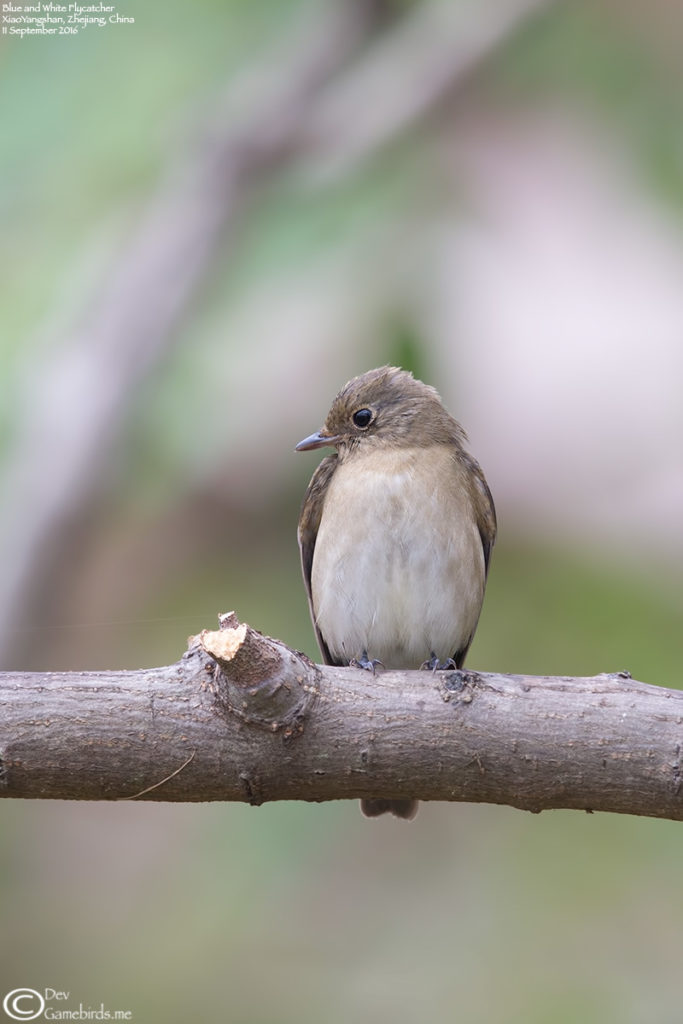
Female Blue and White Flycatcher
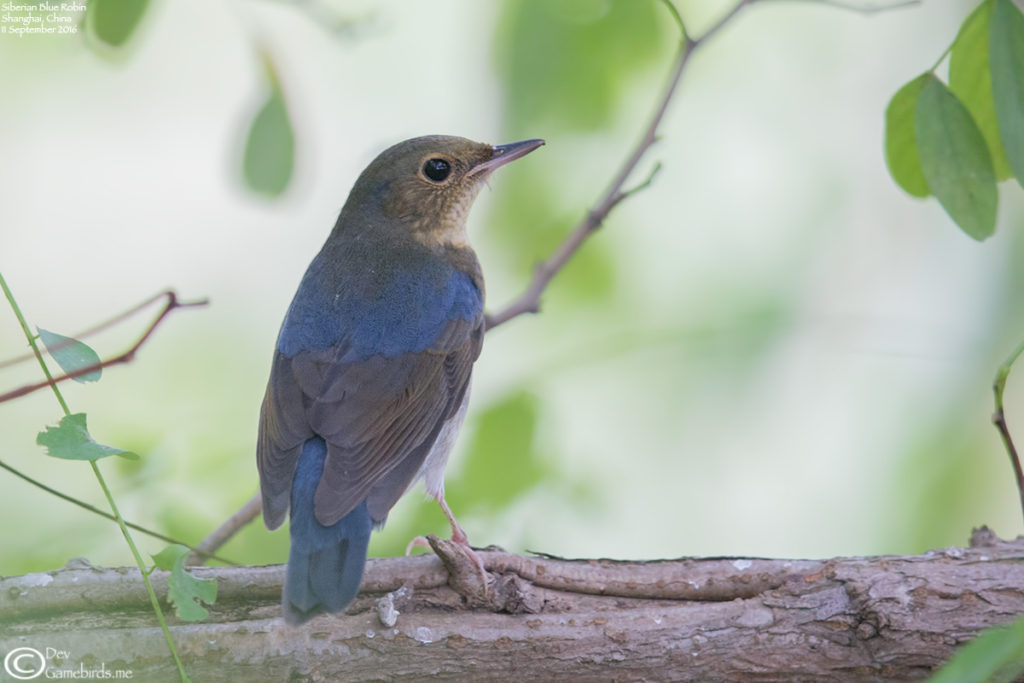
1st Winter Male Siberian Blue Robin

Female Japanese Paradise Flycathcer
Here are Roger’s spectacular shots of the Siberian Thrushes
We din’t bird during the National Holidays to avoid the crazy crowd and the subsequent weekends were bit slow but the Northern Boobook’s were passing through in good no’s. Also, the dry raptor spell has finally came to an end with Peregrine’s Falcons and Eurasian Sparrowhawks, Osprey’s, Common Kestrels and Eastern Marsh Harrier showing up regularly. Amur Falcons are still due.
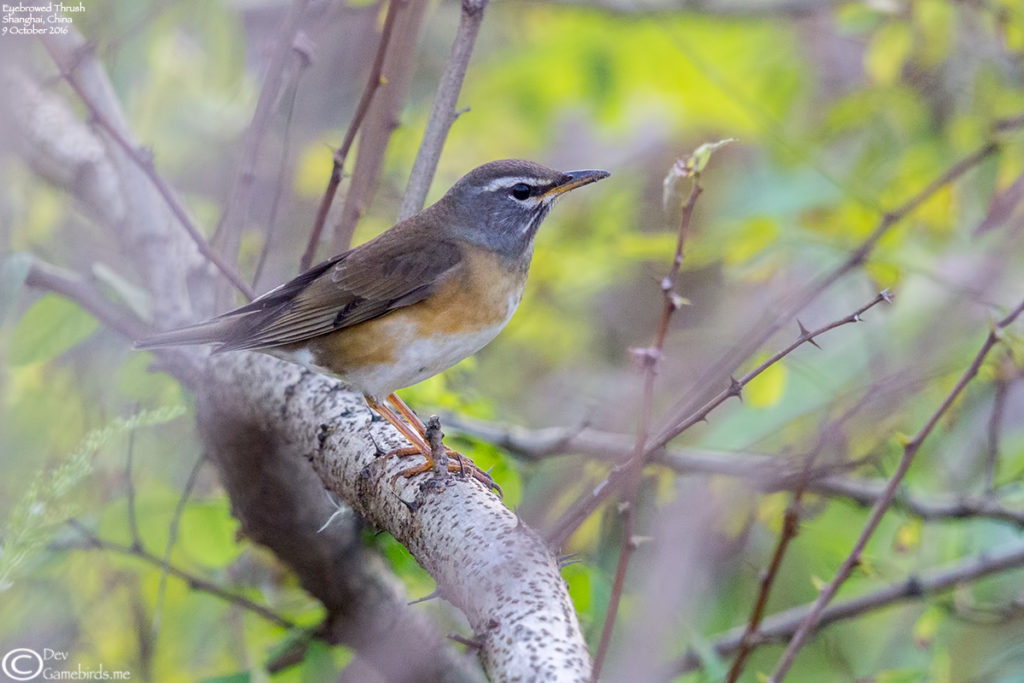
Eyebrowed Thrush
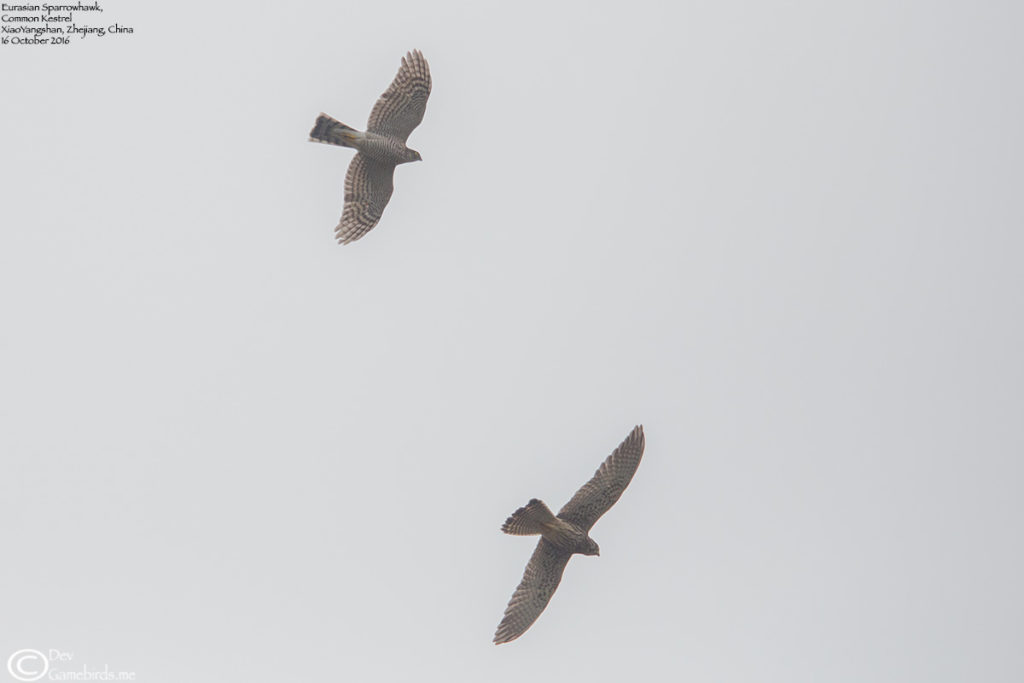
Eurasian Sparrowhawk & Common Kestrel
On the flutterbies front, plenty of new butterflies this season with several blues and Asian Comma and most interestingly this Hummingbird Hawk-moth.
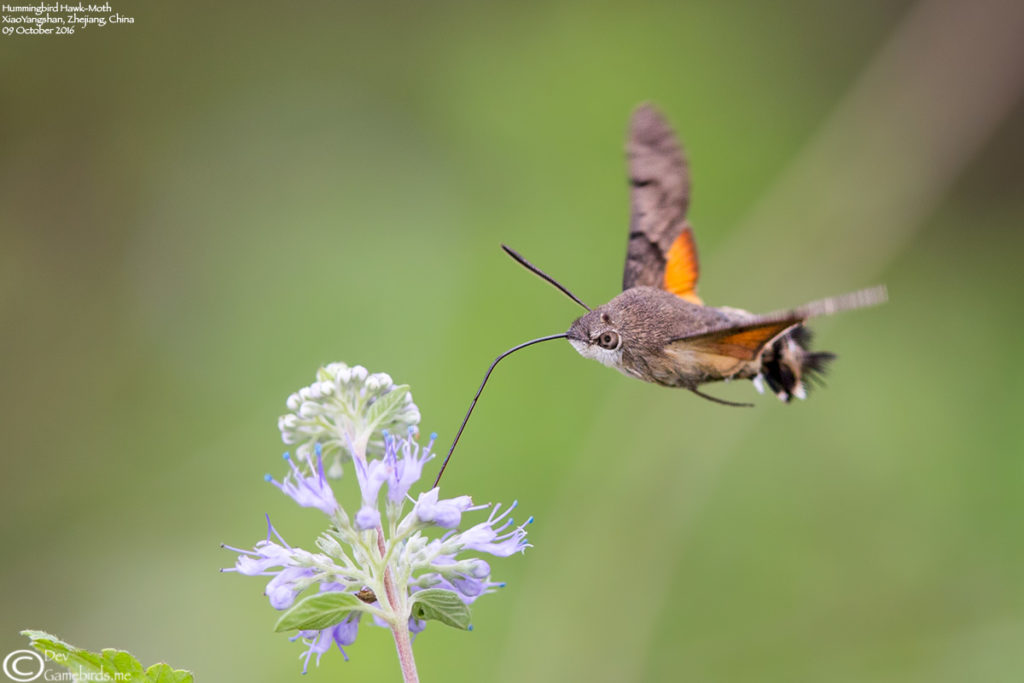
Hummingbird Hawkmoth
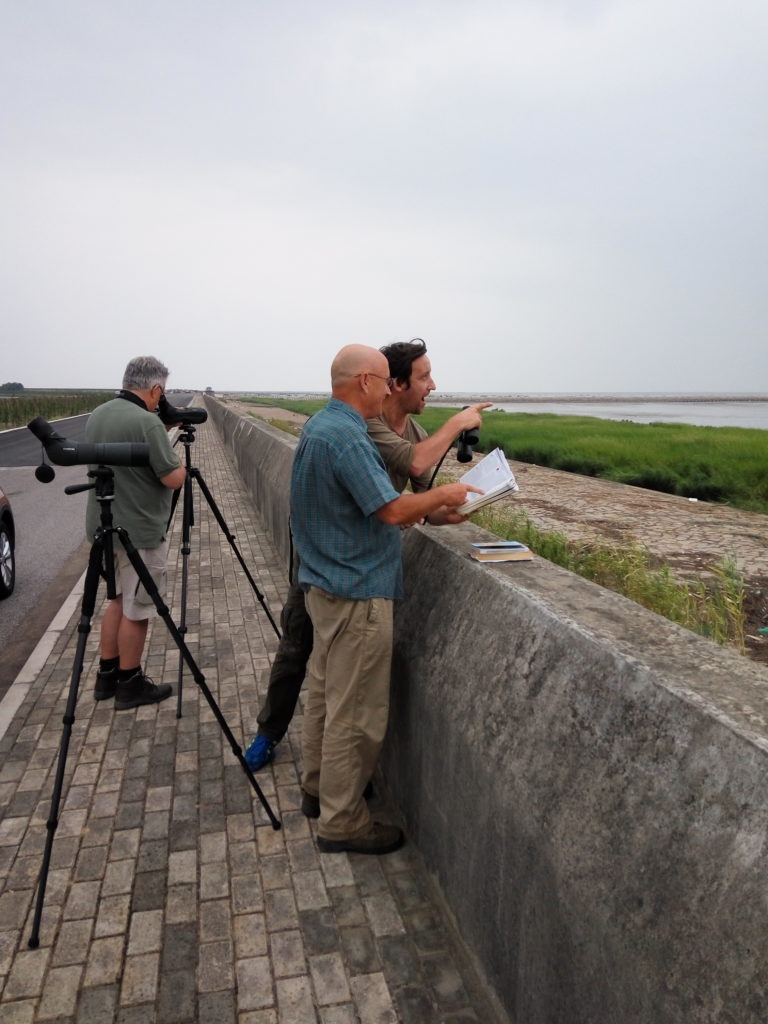
This is not a staged Shot
Finally, our own star-studded International research team, wide variety of expensive optics, all our research materials in the field 😉 only if Kevin completes his “cutting edge”, first ever field guide for “Butterflies of China”. Jokes apart, stay tuned for a major update on the butterflies.
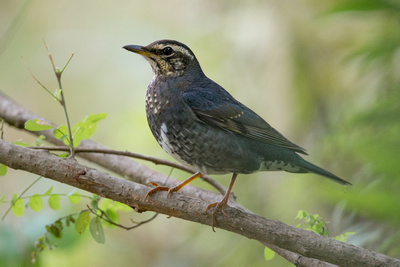
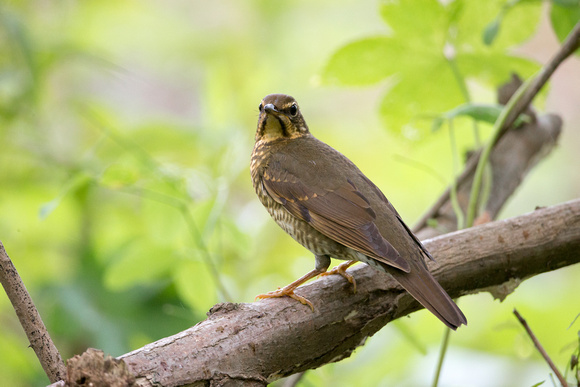
Recent Comments